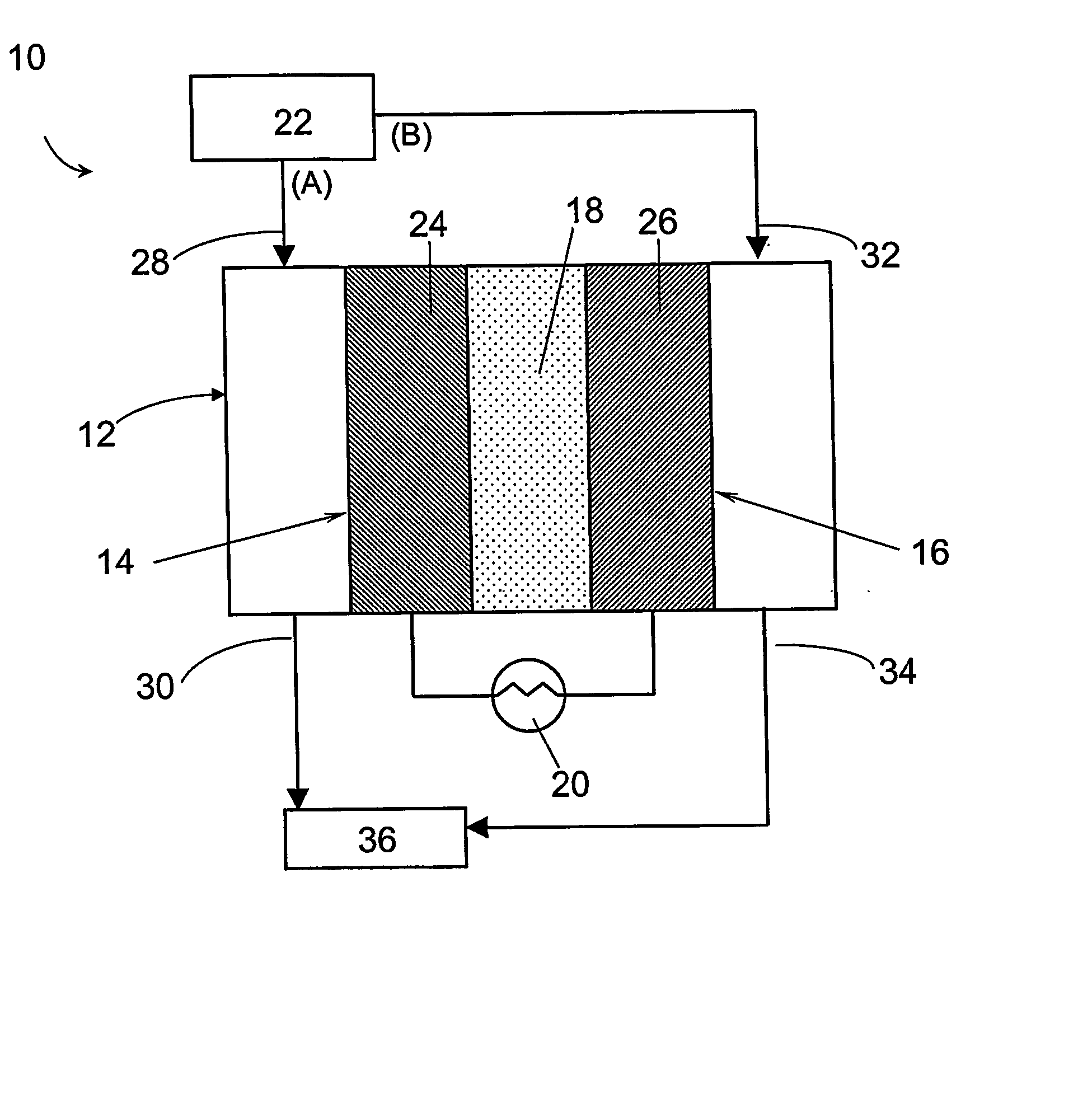Electrochemical preferential oxidation of carbon monoxide from reformate
- Summary
- Abstract
- Description
- Claims
- Application Information
AI Technical Summary
Benefits of technology
Problems solved by technology
Method used
Image
Examples
example 1
Construction of the Electrochemical Preferential Oxidation (ECPrOx) System
[0069] A gas diffusion electrode loaded with 20% (w / o) Pt / C at a metal loading of 0.4 mg / cm2 acquired from E-TEK was used as cathode. A gas diffusion electrode loaded with 20% (w / o) PtRu / C with 0.35 mg / cm2 metal loading, or 40% (w / o) PtRu / C with 0.7 mg / cm2 metal loading were used as the anode. The electrodes were hot-pressed onto a Nafion® 117 proton-exchange membrane to form a membrane-electrode assembly (MEA) at 130° C. and under a load of 4000 lbs of force for about 2 minutes.
[0070] The MEA was then incorporated into a 5 cm2 single cell from ElectroChem, Inc. (Woburn, Mass.), and tested in a test station with temperature, pressure, humidity and flow rate control. The graphite bipolar plate had serpentine flow channels. The ECPrOx unit was operated at room temperature unless otherwise noted. The room temperature recorded in the laboratory varied between 25 and 30° C. The anode and cathode gases were humidi...
PUM
 Login to View More
Login to View More Abstract
Description
Claims
Application Information
 Login to View More
Login to View More - R&D
- Intellectual Property
- Life Sciences
- Materials
- Tech Scout
- Unparalleled Data Quality
- Higher Quality Content
- 60% Fewer Hallucinations
Browse by: Latest US Patents, China's latest patents, Technical Efficacy Thesaurus, Application Domain, Technology Topic, Popular Technical Reports.
© 2025 PatSnap. All rights reserved.Legal|Privacy policy|Modern Slavery Act Transparency Statement|Sitemap|About US| Contact US: help@patsnap.com



